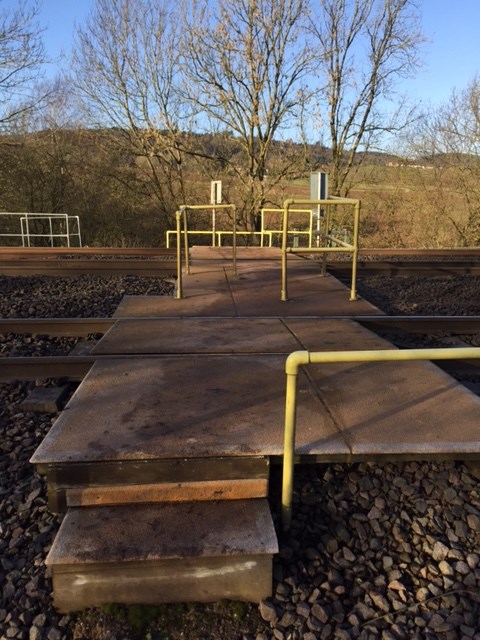Monday 18 Jan 2016
Cofton footpath crossing to remain closed for 2016
- Region & Route:
- | North West & Central
Network Rail has confirmed that the footpath level crossing at Cofton will remain closed during 2016 while a safer solution for crossing the railway on this route is found and put in place.
The crossing passes over three live railway lines with a maximum speed of 90mph and 300 trains per day. A study of the crossing in summer 2015 which formed part of the Bromsgrove to Barnt Green electrification project revealed that there was insufficient warning time of approaching trains and the crossing was closed on 9 July 2015.
Ben Parish, level crossing manager for Network Rail, said: “We have had to extend the closure of the footpath crossing at Cofton as it is not safe to cross the three railway lines with trains travelling at such fast speeds as there is simply not enough warning time of oncoming trains.
“We will continue to explore options to allow footpath users to cross the railway safely at this site and two possible options have been identified. We will be consulting with local stakeholders on these over the next few months.”
The crossing connecting Cofton Church Lane and Bittell Farm Road near Barnt Green, has been legally stopped-up by way of an Order confirmed by Worcester County Council and approved by the Department for Transport. The Order will remain in place until 31 December 2016 while Network Rail finds a solution which will allow users of the public footpath to cross the railway safely.
ENDS
Notes to Editors:
Since 2010, Network Rail has helped make the railway significantly safer by improving and upgrading crossings with new technology.
More than 100 dedicated level crossing managers have been employed and trained to manage the safety of around 60 crossings each, building local relationships with those that use the railway most frequently, and an improved management system helps us better understand the specific risks at each crossing and deploy appropriate warning and protection measures.
Innovation and improvements at level crossings:
- 1,100 crossings have improved sighting
- 494 level crossings fitted with brighter LED lights
- 113 level crossings fitted with spoken audible warnings to announce when “another train is coming” after one train has passed through
- 66 new barriers fitted at automatic open crossings
- 66 crossings fitted with a time delay, preventing a signaller from mistakenly raising the barriers as a train approaches
- 20+ crossings fitted with Home Office approved red light safety cameras which act like speed cameras and capture motorists crossing after the warning sequence has begun.
- 15 BTP-operated fleet of mobile safety vehicles with number plate recognition camera technology introduced
- 81 level crossings are in the process of being fitted with power operated gates
- Less costly modular footbridges developed
Contact information
Passengers / community members
Network Rail national helpline
03457 11 41 41
Latest travel advice
Please visit National Rail Enquiries
Journalists
Network Rail press office - North West & Central Region
0330 854 0100
NWCmediarelations@networkrail.co.uk
About Network Rail
We own, operate and develop Britain's railway infrastructure; that's 20,000 miles of track, 30,000 bridges, tunnels and viaducts and the thousands of signals, level crossings and stations. We run 20 of the UK's largest stations while all the others, over 2,500, are run by the country's train operating companies.
Usually, there are almost five million journeys made in the UK and over 600 freight trains run on the network. People depend on Britain's railway for their daily commute, to visit friends and loved ones and to get them home safe every day. Our role is to deliver a safe and reliable railway, so we carefully manage and deliver thousands of projects every year that form part of the multi-billion pound Railway Upgrade Plan, to grow and expand the nation's railway network to respond to the tremendous growth and demand the railway has experienced - a doubling of passenger journeys over the past 20 years.
Follow us on Twitter: @networkrail
Visit our online newsroom: www.networkrailmediacentre.co.uk

